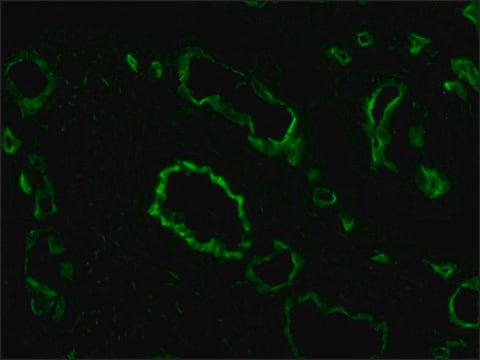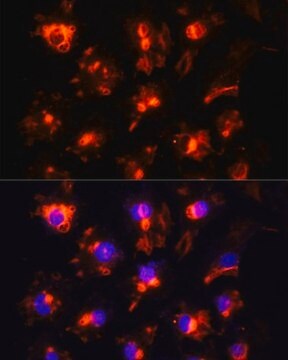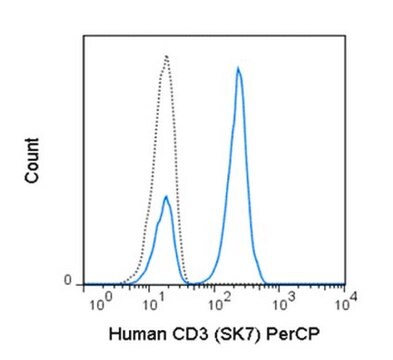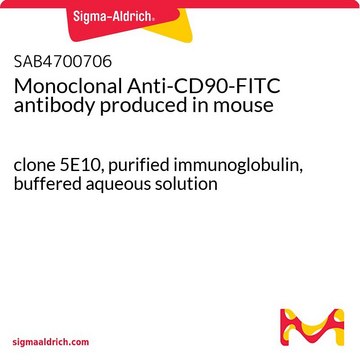F8402
Monoclonal Anti-CD31 (PECAM-1)−FITC antibody produced in mouse
clone WM-59, purified immunoglobulin, buffered aqueous solution
Synonym(s):
Monoclonal Anti-CD31, Anti-PECAM-1
About This Item
Recommended Products
biological source
mouse
Quality Level
conjugate
FITC conjugate
antibody form
purified immunoglobulin
antibody product type
primary antibodies
clone
WM-59, monoclonal
form
buffered aqueous solution
mol wt
antigen 130-140 kDa
species reactivity
human
storage condition
protect from light
technique(s)
flow cytometry: 10 μL using 1 × 106 cells
isotype
IgG1
UniProt accession no.
shipped in
wet ice
storage temp.
2-8°C
target post-translational modification
unmodified
Gene Information
human ... PECAM1(5175)
Looking for similar products? Visit Product Comparison Guide
General description
Specificity
5th Workshop: code No. P025
Immunogen
Application
Flow cytometry/Cell sorting (1 paper)
- DAB based-immunohistochemistry
- direct immunofluorescent staining
- fluorescence-activated cell sorting (FACS)
- flow cytometry
Biochem/physiol Actions
Target description
Physical form
Preparation Note
Disclaimer
Not finding the right product?
Try our Product Selector Tool.
Storage Class Code
10 - Combustible liquids
WGK
nwg
Flash Point(F)
Not applicable
Flash Point(C)
Not applicable
Personal Protective Equipment
Choose from one of the most recent versions:
Already Own This Product?
Find documentation for the products that you have recently purchased in the Document Library.
Our team of scientists has experience in all areas of research including Life Science, Material Science, Chemical Synthesis, Chromatography, Analytical and many others.
Contact Technical Service








